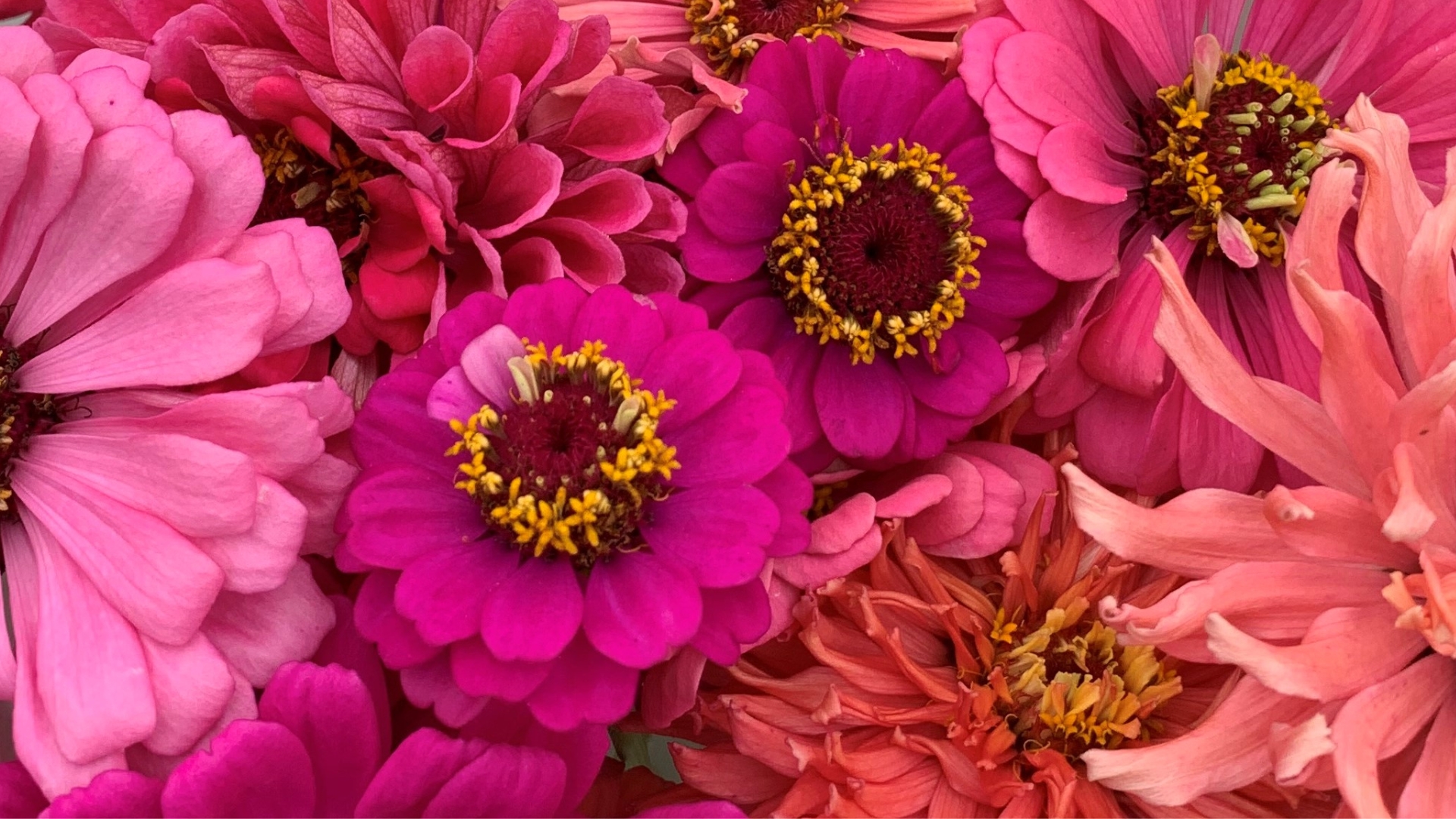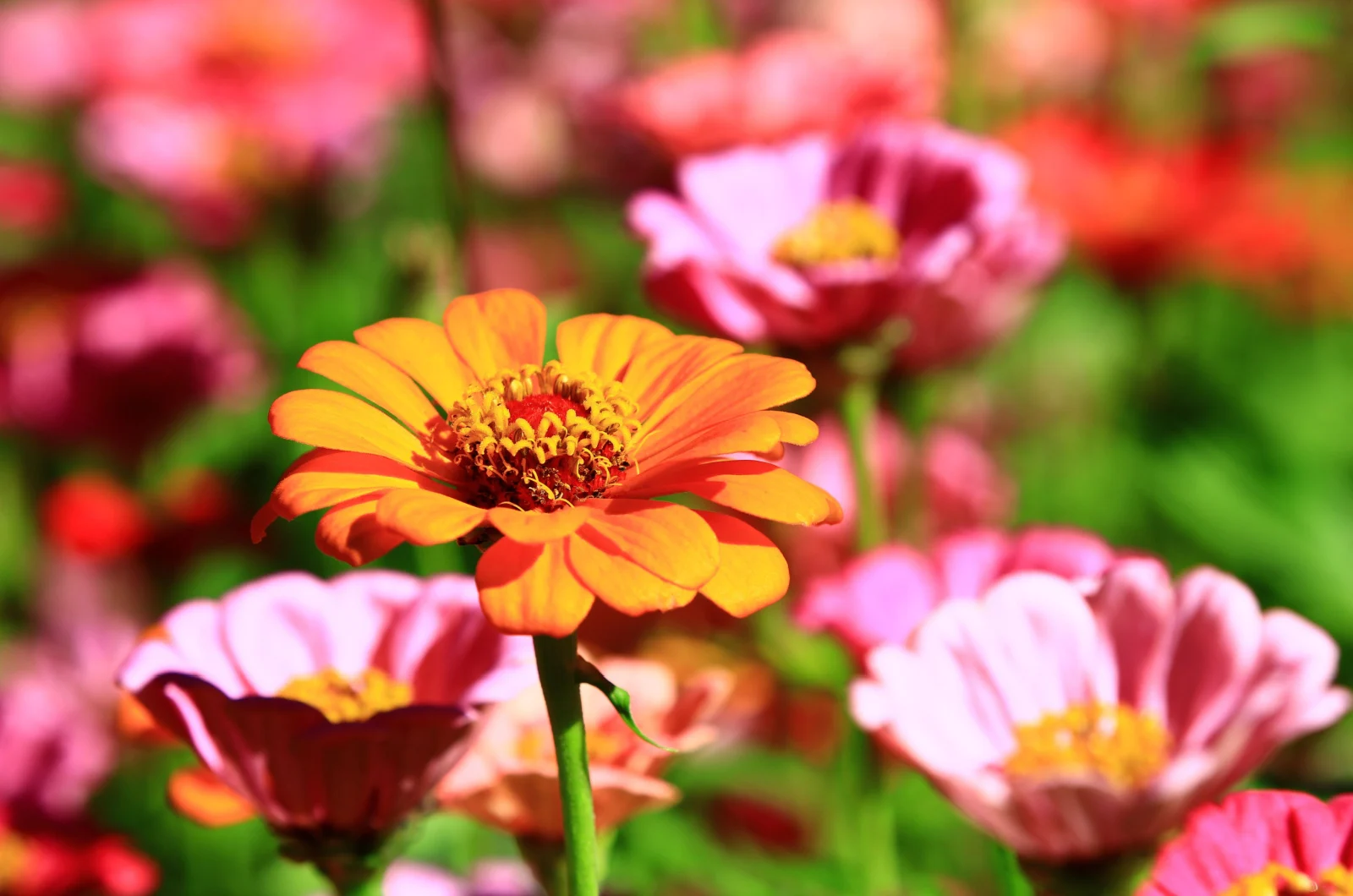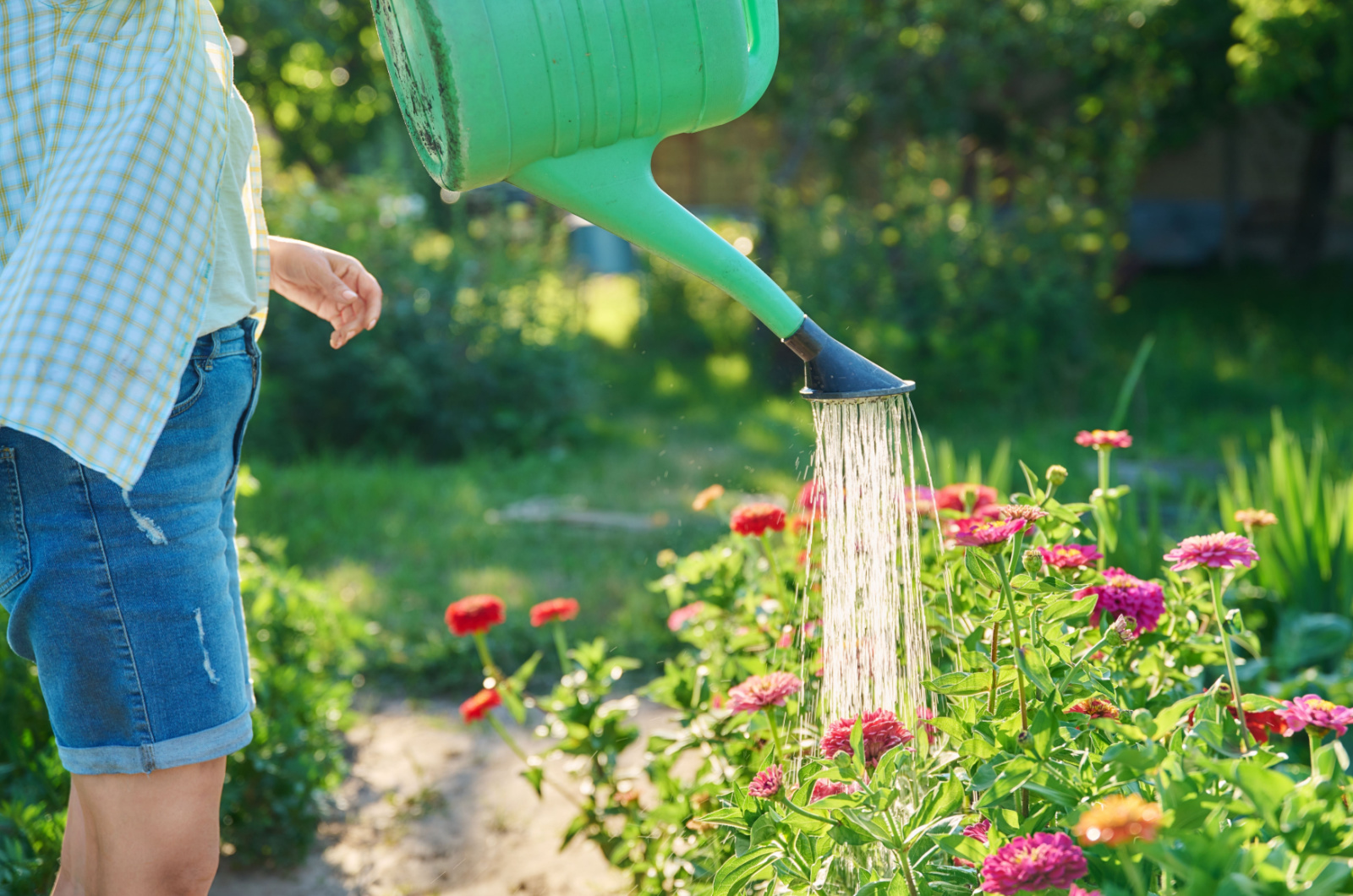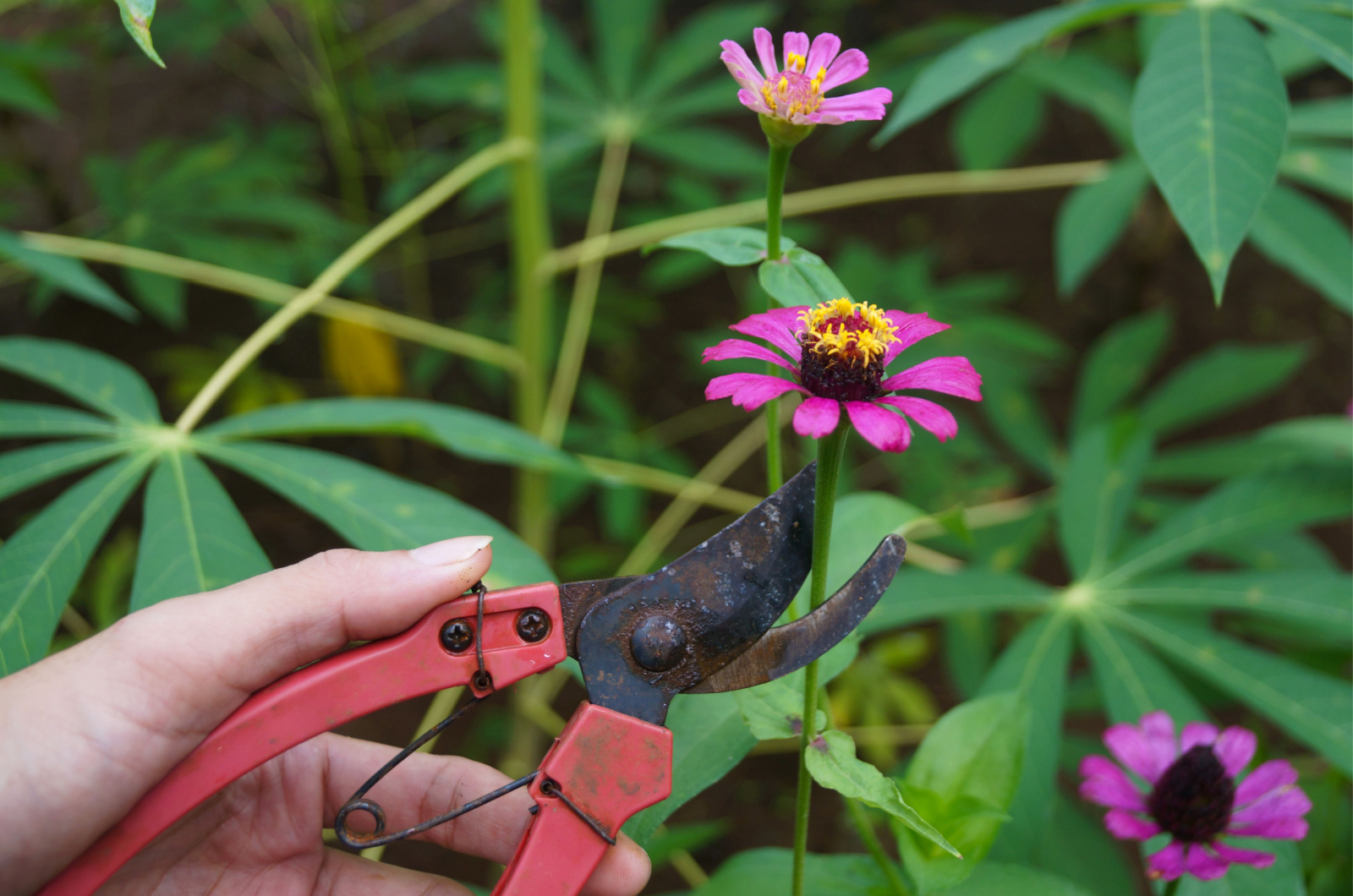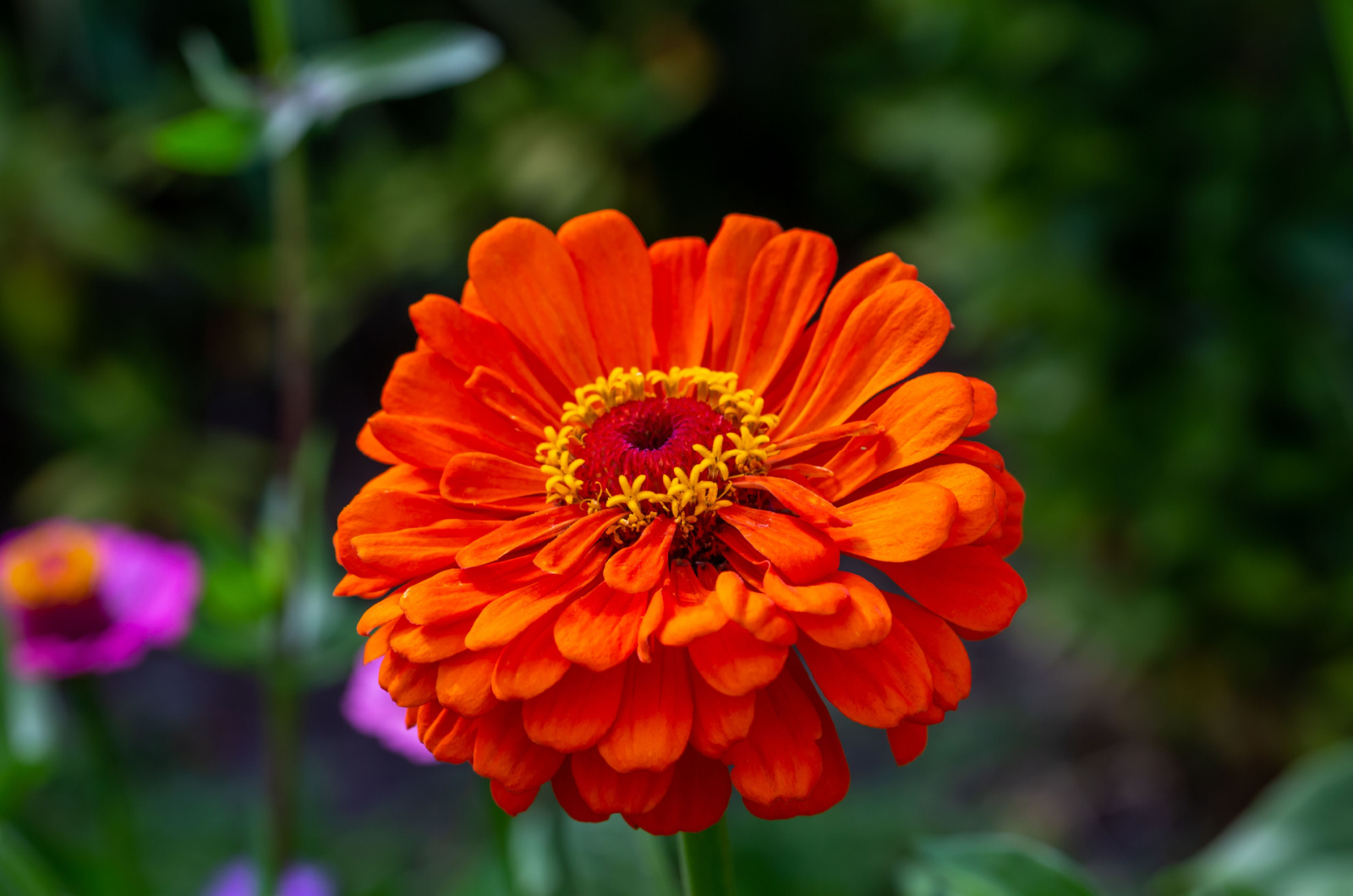Welcome to the world of Zinnia flowers!
These vibrant and versatile blooms come in a stunning array of colors, from bold reds and oranges to soft pinks and purples, and they can make your garden look magical. With many types of zinnia available, there’s a perfect match for every gardener out there.
If you are new to growing zinnias, we’ve got you covered!
In this article, we are going to talk about planting and growing tips, and share some wisdom on how to maintain zinnias. Let’s turn your garden into a colorful haven.
Meet Zinnia Flowers
How To Plant Zinnia Flowers
When planting zinnias, it’s important to find a location where they can receive full sun exposure throughout the day – pick a suitable flower bed, container, or a sunny border for your zinnias.
Since they rapidly grow from seed to flower, it’s ideal to plant zinnias in early spring. In just two months, your zinnias will be in full bloom!
Please note that you should wait until the soil has warmed up to around 60 degrees Fahrenheit before planting the seeds. Sow them half an inch deep, cover with soil, and water thoroughly.
Or, you can start the seeds indoors and then transplant young seedlings outdoors. Space little zinnia seedlings 12 to 18 inches apart from each other to prevent overcrowding. This way, you’ll have a prolonged blooming season.
You can consider growing some zinnia companion plants nearby, such as asparagus or beans.
Most Popular Types Of Zinnia
• Queen lime – a cultivar with a subtle lime-green color with hints of pink and yellow. These zinnias can grow up to 40 inches tall.
• California giants – these varieties can reach up to 4 feet tall and more. They are great for floral arrangements or dramatic effect in the garden.
• Zahara – a disease-resistant cultivar that can be easily grown indoors or in a garden bed.
• Thumbelina – a dwarf variety that has petite stature and vibrant blooms. Ideal for pots or containers.
Related: Grow This Herb Next To Zinnias And Watch The Wonders Happen
How To Grow Zinnia Flowers
We’ve already mentioned that these flowering plants like full sun, but there’s more to it!
Don’t worry, these are trouble-free plants that anyone can grow. But, if you want to keep them healthy and thriving, you’ll have to make some adjustments.
Light Requirements
If you are growing zinnias indoors, make sure to place them near a sun-facing window where they’ll receive at least 6 hours of sunlight throughout the day.
The more sunlight you give them, the more flowers they’ll produce!
Soil Requirements
Zinnias will appreciate slightly acidic to neutral soil. Add some organic matter for that extra nutrient boost.
It’s important that the soil is well-draining because your zinnias can easily get waterlogged. Loose and airy soil will also keep your zinnias happy.
Water Requirements
After you’ve generously watered your zinnia seeds, you’ll continue with watering every day until the seedlings appear. Then, change the watering schedule to no more than three times a week.
Once those lovely blooms appear, avoid getting the leaves wet because they might attract all sorts of fungi.
If you give your zinnias too much water, it might lead to root rot, which is a deadly fungal infection that affects the roots first, but then spreads and destroys your entire plant.
Temperature Requirements
These are sun-loving plants that enjoy the warmth. The moment the temperature reaches roughly 60 degrees Fahrenheit, you can move your zinnias outside. Humidity is not a huge concern for zinnias, so don’t worry about it.
Fertilizer Requirements
You can add a little bit of balanced fertilizer during their blooming period. Sprinkle some granular fertilizer around the plant’s base or choose a water-soluble fertilizer for a quick boost when watering.
Pruning
Only cut back young plants to encourage bushier growth. Other than that, you won’t have to prune them as much. Deadheading will lead to more blooms. The more flowers you harvest, the more flowers will be produced.
Potting & Repotting
Always use a container with drainage holes in the bottom for your zinnias. When planting, don’t add more than three seeds per pot. Container zinnias will need watering every day during the summer.
Since these are annual plants, you won’t have to repot them. However, you can let some flowers grow and produce seeds, which you can use for propagation later on.
Related: A Complete Guide Through All The Zinnia Growth Stages
Propagation
You can propagate zinnias three ways: by division, cuttings, or seeding.
• Division – lift a mature plant from the soil and divide the roots into smaller sections with shoots. Plant the separated sections into a new hole and water thoroughly.
• Cuttings – cut a 4- or 6-inch long healthy stem, remove bottom leaves, and put it in a vase with water. Transplant them in soil when the roots develop.
• Seeding – simply sow zinnia seeds about half an inch deep and space them 6 inches apart. If you grow taller varieties, you’ll have to space them even more.
Common Issues
Although zinnias are relatively resilient and easy to grow, there are still some issues that might hinder their growth.
One such issue is powdery mildew, a fungal infection that looks like a white, powdery substance on the leaves. To avoid this, provide proper air circulation and don’t get the leaves wet.
Zinnias can also be affected by botrytis blight or gray mold. On their leaves and flowers, the infection appears as brown patches. Bacterial wilt is another disease that can create these patches; it is spread easily to adjacent plants through the soil.
This is why you always have to check the soil and use fresh ones in case your plants get sick.
We’ve already mentioned root rot, which can be avoided by balancing the watering schedule. In case of an infection, transplant the plant and trim away diseased roots.
Also read: 10 Affordable Flower Seeds You Can Sow Directly Outdoors

